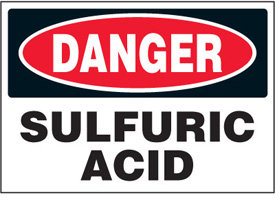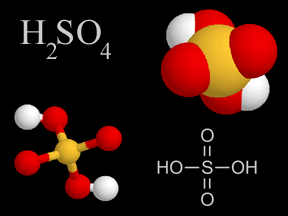
by Bailiff Enterprises

| Storing Sulfuric Acid in Poly Tanks | |
| HDPE Polyethyelene is a good material for sulfuric acid storage tanks. It is good, but just like with steel tanks, HDPE is not perfect. Sulfuric acid in high concentrations will attack just about any material. That means the tanks should be monitored and replaced when needed. | |
| ... | Exxon Chemical did a comparative study and found that HDPE (sometimes incorrectly referred to as HDLPE) is better at resisting the chemical attack of highly concentrated sulfuric acid than XLPE. XLPE is also known as crosslinked polyethylene. Exxon Chemical is one of the largest producers in the world of both HDPE and XLPE. |
| One of the concerns with storing concentrated Sulfuric Acid in any tank is the heat that is given off when any water comes in contact with the acid. Under no circumstances should a plastic tank be used as a mixing tank for concentrated sulfuric acid and water. The heat that results from the exothermic reaction can raise the temperature above the safe operating temperature of the tank and cause tank failure. Poly tanks should only be used for bulk storage of sulfuric acid. | |
| We recommend the use of a heavy wall tank for the storage of concentrated sulfuric acid. We recommend the use of a tank rated to 2.2 specific gravity. That is a tank rated for liquids 2.2 times the weight of water. Concentrated sulfuric acid has a specific gravity of over 1.8 and we recommend taking extra precautions when storing it. | |
| Any water that enters the tank through the vent such as humidity that condenses inside the tank will cause heat to be given off when it comes in contact with the acid. Since sulfuric acid is so dense, water that enters the tank but is not mixed will dilute only the top layer of acid. That will cause heat to be given off along an narrow band along the tank wall. | |


